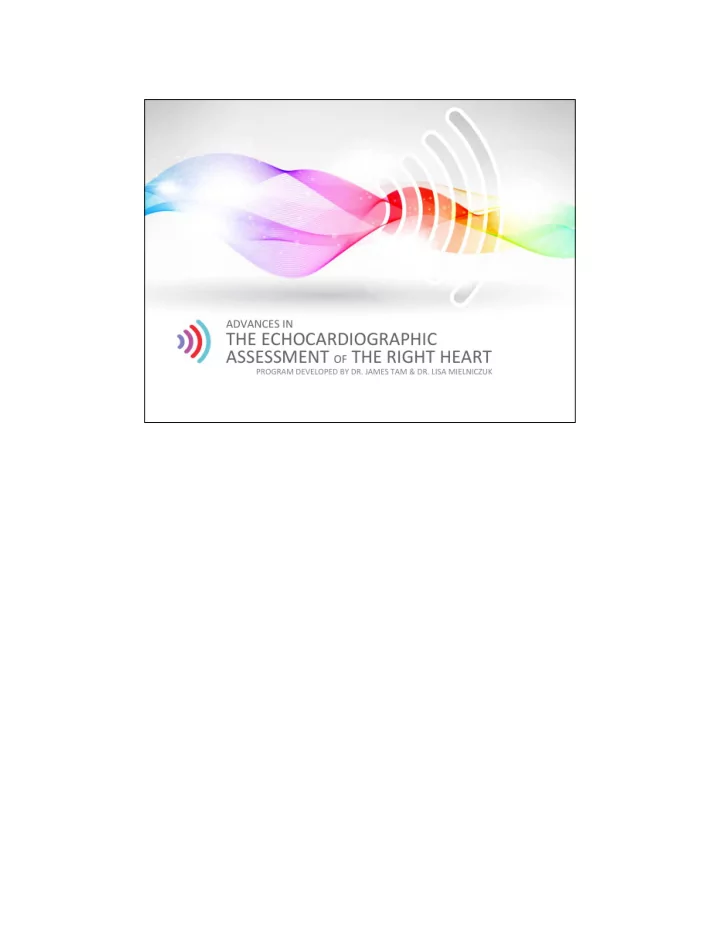

2
3
4
5
6
• All forms of PAH share equivalent obstructive pathological changes of the pulmonary microcirculation • This suggests that there are shared pathobiological processes among the diseases associated with PAH 7 7 ¡
• Right heart catheterization (RHC) is required for the diagnosis of PAH to assess the severity of hemodynamic impairment • Left heart catheterization is required in circumstances in which a reliable pulmonary capillary wedge pressure cannot be measured -new 2008 guidelines removed the exercise induced elevation in PAP from definition – all have some degree in PAP rise due to increase in CO with exercise – how much is normal vs. abnormal is unknown – and all pts with mild PH will raise their pressure with exercise 8 8 ¡
Clinical Classification • The Dana Point classification scheme for PH has 5 clinical groups: 1. PAH , 1 ’ Pulmonary veno-occlusive disease (PVOD) and/or pulmonary capillary hemangiomatosis (PCH). 2. PH owing to left heart disease, 3. PH owing to lung diseases and or hypoxia, 4. PH Chronic thromboembolic pulmonary hypertension (CTEPH), 5. PH with unclear multifactorial mechanisms • Each PH group in the Dana Point classification scheme is also divided into subtypes with specific characteristics 10 10 ¡
11
• Group 2 of the Dana Point classification scheme is PH owing to left heart disease • This may include subcategory 2.1 , 2.2 and 2.3 12 12 ¡
• Group 3 of the Dana Point classification scheme is PH owing to lung diseases and/or hypoxia • Possible lung diseases associated with this class include: chronic obstructive pulmonary disease, interstitial lung disease, other pulmonary diseases with mixed restrictive and obstructive pattern, sleep disordered breathing, alveolar hypoventilation disorders, chronic exposure to high altitude and developmental abnormalities 13 13 ¡
• Group 4 includes Chronic thromboembolic PH or CTEPH • Group 5 includes : 5.1 Hematologic disorders : myeloproliferative disorders, splenectomy 5.2 Systemic disorders : sarcoidosis, pulmonary Langerhans cell histocytosis 5.3 Metabolic disorders : glycogen storage disease, Gaucher disease, thyroid disorders 5.4 Others : tumoral obstruction fibrosing mediastinitis, chronic renal failure on dialysis 14 14 ¡
15
This table shows the prevalence of common symptoms in PAH. The two columns are for the prevalence of symptoms at the time of diagnosis and the prevalence of symptoms during the entire course of disease. There have also been some reports that sleep apnea is associated with PAH, particularly in the presence of bilateral leg edema. At the present time, however, there is no consensus that sleep apnea should be listed as a key symptom of PAH. 16 16 ¡
• PAH tends to be diagnosed late in the disease – generally due to patients being asymptomatic until late in disease, under-recognition, lack of screening of those at risk, and the non-specific nature of symptoms. • Early in the disease process, patients are generally asymptomatic, one of the reasons for late diagnosis. • Dyspnea on exertion is the most common presenting symptom, sometimes accompanied by fatigue, dizziness, palpitations. Later, other non-specific symptoms may include chest pain (which may be indistinguishable from coronary artery disease), recurrent syncope, coughing. • The non specific nature of symptoms can lead to confusion with other conditions such as: Deconditioning Psychological problems (depression, anxiety) Biventricular heart failure Coronary artery disease Asthma, chronic obstructive airway disease • Late in the disease there are characteristic symptoms and signs of right heart failure including edema and ascites. • Diagnosis requires confirmation of PAH with RHC and evaluation of etiology. 17 17 ¡
This slide lists the most common diseases associated with PAH. Patients with collagen vascular diseases, most significantly scleroderma (SSc), but also lupus and mixed connective tissue disease, are at higher risk for PAH. Congenital systemic to pulmonary shunts are also associated with PAH. Such patient types include those with ASD, VSD or PDA, as well as those with Eisenmenger ’ s syndrome. Portal hypertension and HIV infection are also commonly associated with PAH. 18 18 ¡
19
As might be expected, New York Heart Association functional class at diagnosis is highly predictive of mortality. Most patients with PAH are symptomatic at diagnosis. The level of symptomatic deterioration is highly correlated with the patient ’ s underlying hemodynamic function. Literature reports of survival of patients with scleroderma with associated PAH vary from 45-55% at one year to approximately 30%-50% at two years. 20 20 ¡
Reference: Humbert M et al. Survival in patients with idiopathic, familial, and anorexigen- associated pulmonary arterial hypertension in the modern era. Circulation 2010;122:156-163.
Let us turn our attention, for now, to some general information about echocardiography, the anatomy of the right ventricle, and have a brief look at echocardiography technologies/methodologies. 23 23
24
25 25
26 26
27 27
28 28
29
30
31 31
32
33
34 34
35
In patients with pulmonary hypertension, the flow profile within the pulmonary artery will also be abnormal, with a short “ acceleration time ” (AT). The mean pulmonary artery pressure (in mmHg) can be estimated from the pulmonary acceleration time (in ms) using the regression formula described above. 36
37 37
38 38
39 39
40 40
41 41
42
Figure shows effect of contrast enhancement of continuous wave (CW) signal of tricuspid regurgitation (TR). A. Before contrast enhancement, TR signal was not detected. B. With the injection of 10% air – 90% saline mixture or C. 10% air – 10% blood – 80% saline mixture, complete CW signal of TR could be observed. But the air-blood-saline mixture exhibited a higher peak velocity compare with air-saline mixture. 43
44
45 45
46
47
48
49 49
50 50
51 51
52
53 53
55
56
58 58
60 60
61
62 62
Recommend
More recommend